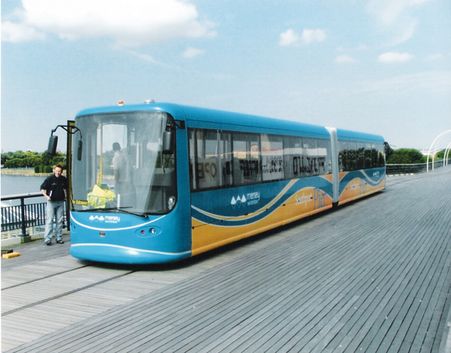Ultra Light Rail Claims Lower Risk and Lower Cost than Traditional Light Rail [View all]
 Ultra Light Rail Claims Lower Risk and Lower Cost than Traditional Light Rail
ULRT uses electric buses on rails, with a few tweaks, that give it the potential to disrupt the way transit is built.
Ultra Light Rail Claims Lower Risk and Lower Cost than Traditional Light Rail
ULRT uses electric buses on rails, with a few tweaks, that give it the potential to disrupt the way transit is built.
Steve Ostrowski
The greatest advancements in technology happen when great inventions collide. The wheel gets paired with an axle. The computer with a cell phone. And now, in the case of public transit, quick charge electric buses, with on-off-rail technology. It's called Ultra Light Rail Transit (ULRT) and it's being presented as a lower risk, lower cost alternative to light-rail transit (LRTs). Simply put, ULRT uses electric buses on rails, with a few tweaks, that give it the potential to disrupt the way transit is built.
But how can this be? New technology can be wrought with risk,, expensive, packed with more computers, more autonomy, more software and more cost. So, it seems unreasonable that new technology can be lower risk.
But ULRT claims are extraordinary: fast construction, low cost, BRT reliability, LRT performance and the smallest carbon footprint. The upside of these claims could change how people move in the 21st Century, so it is time to revisit how public transit assesses risk.
The simplest definition of risk is 'the possibility of loss' and by that definition, one can make a compelling case for ULRT to be lower risk than LRT. ULRT proponents reason the degree of risk, reduced by lower cost and shorter construction time, exceeds the degree of risk assumed by it being a new approach to transit design and construction. ................(more)
https://www.masstransitmag.com/rail/infrastructure/article/21213369/ultra-light-rail-claims-lower-risk-and-lower-cost-than-traditional-light-rail
